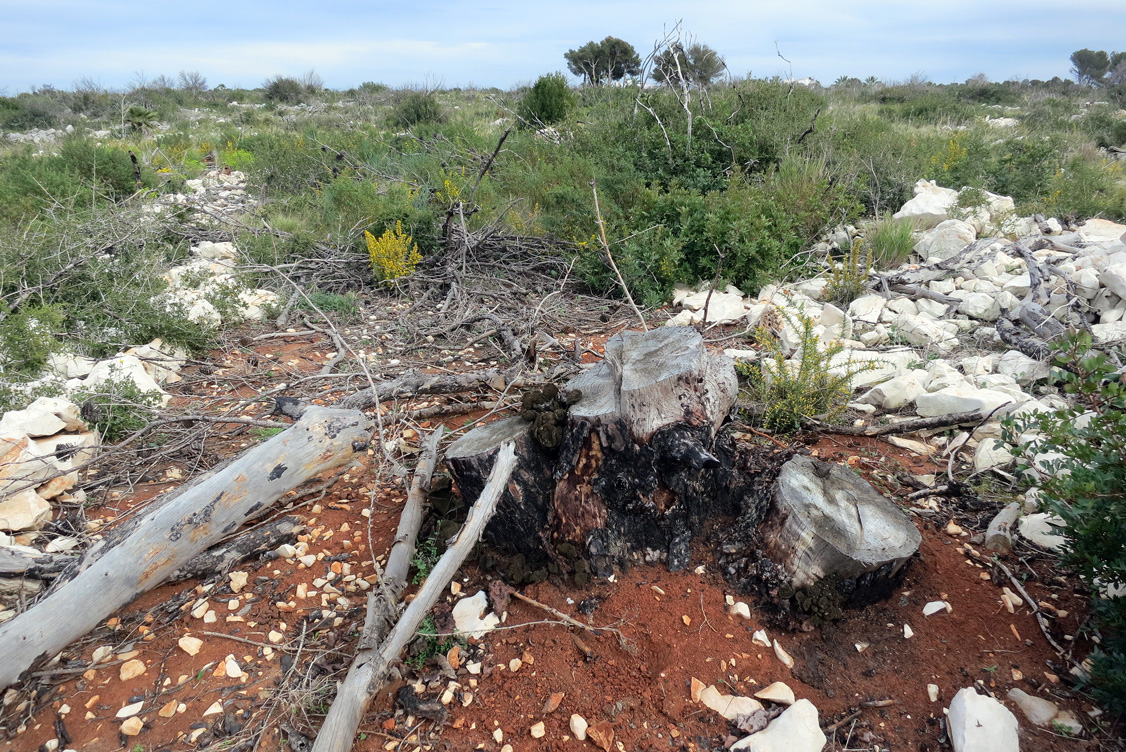Nature is dynamic. In forestry one has to view upon this fact with different scientific ”glaces”. For instance understanding different scales and the consequences within inherited necessary demarcation.
Time is one important variable, for instance, and without this factor no trees to harvest quite simply, now if that is the purpose. The treeline has changed dynamically over time. See for instance Prof Kullman and Öbergs work. In our era, Antropocene, it is interesting to see if and how the increased carbon dioxide levels in the atmospehere affects this, i.e., implications of increased temperatures and drought. Humans have obviously also affected the treeline directly in many places. One typical example is in the Mediterranean region.
At the mountain Montgo in Spain this lonely tree of the pinus family endures on the most shaded side of the mountain. For how long? And why there? The small amount of rain and slightly colder local climate still makes it possible. Campare with Old Tjikko, are there some similarities? The photo was taken by Pierre Zarebski (www.simq.se) under a common exploration of the Mediterranean mountain plants.
A lonely tree of the pinus family endures – like in Scandinavia – close to the shoreline of the Mediterranean sea. Also this on the shaded side of the slope and, as usual, in favourable micro and macro conditions in the ground and soil. Campare with Old Rasmus , are there similarities? At the time of Dryas the Mediterranean sea level where about 40 meters lower, landscape and vegetation much different.
”Wrong place” for a young tree, even of the assumptive pinus family. In any case, the local fire burnt it (or the drought), but it remains a long standing skeleton due to the cylinder formed opening in the rock, through where it grow up.
Treeline in change? A natural fire has burnt a slope next to the Mediterranean sea. Plants in need for greater amount of sunlight will flourish, some of them rare in this natural reserve (Cape San Antonio, also a marine reserve). The increased risque of erosion has already been treated by earlier farming activities.
A cone (undetermined) of the Pinus family is slowly working its seeds into (earlier burnt) mineral soil and a new tree will slowly grow up, here on flat ground.
A pinus tree is making its way up towards light, here in between stones with high content of lime.
Burnt tree skeletons are typically removed from the landscape, not the least for aesthetic reasons. However, insect fauna thrive both in hollows in trunks and in open soil.
Treeline in change? Judge for yourself. We are seriously concerned about the increasing friction between short-term thinking on one hand and the more and more demolished possibilities for long term natural dynamics governing healthy forests. We humans have to change our behaviour and methods quite simply. Our work continuos.







